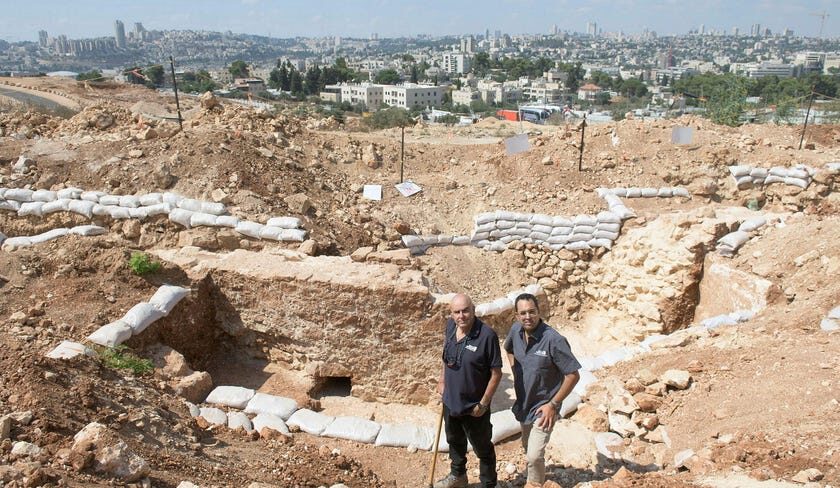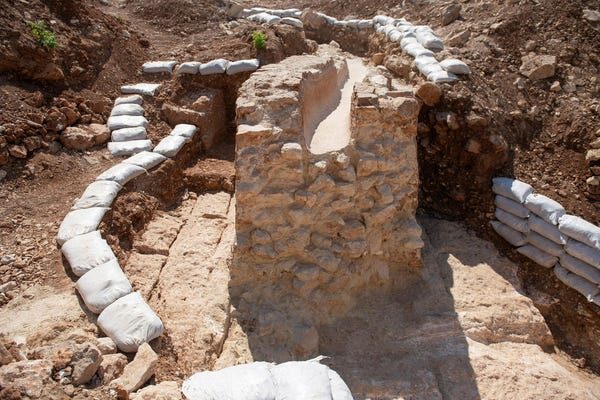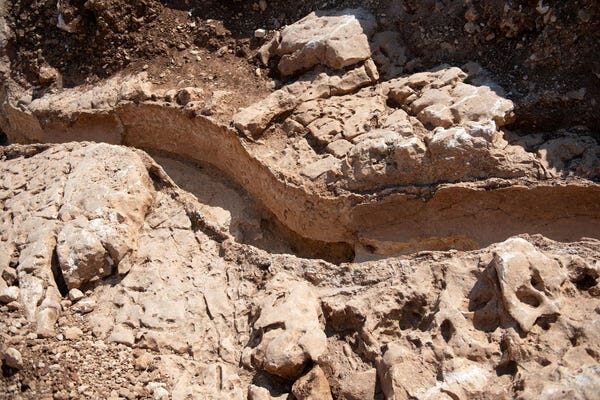
Researchers have attempted for about 150 years to decipher the secret of how the ancient city's huge water system brought water to Jerusalem during the Second Temple period (which ended in the year 70) and on into the late Roman period. In its time, it was the largest network of water infrastructure in the country.
Experts know about two aqueducts from those periods: the lower aqueduct, which supplied the Temple, and the upper aqueduct, which suppled the upper city - where the Jewish Quarter and the Armenian Quarter of the Old City are now situated. The two aqueducts carried water over considerable distances from Solomon's Pools in the Bethlehem area into Jerusalem's city walls. Small sections of aqueduct were discovered over the years, but the debate about their precise route - and particularly when they were built - continues.

Comment: The crimes of the Israeli state are many times worse than that: 'Israel was born in sin. I'm collaborating with a criminal country', says former PMs son
It also prompted a salvage dig, carried out by the Israel Antiquities Authority, in which the longest stretch of the aqueduct ever discovered in Jerusalem was revealed. The dig has revealed three phases of construction along a 300-meter stretch. Twenty-five coins were discovered in the plaster of the ancient water carrier. The directors of the dig, Dr. Ofer Sion and Rotem Cohen, think the coins were deliberately placed there by those who built the aqueduct as good luck charms.
The coins haven't yet been cleaned and dated but Sion expects they will turn out to be from period of the final renovations to the aqueduct in the late Roman period, following Jerusalem's destruction. During that period, the aqueduct was repaired by the 10th Roman Legion, which had conquered Jerusalem from the Jews during the Great Revolt. The excavation even unearthed a nail that could have been from a legionnaire's sandal.
It's still not clear, however, whether the last construction was carried out immediately after the destruction of the Temple in the year 70 or decades later, with the establishment of the new Roman city on the site, Aelia Capitolina. The archaeologists also discovered two earlier stages of construction, apparently attributable to the period of King Herod and later work attributed to a later Roman government.

Comment: For insight into just who Josephus was, and the hard truth behind the Jesus story, check out: From Paul to Mark: PaleoChristianity
Josephus noted that Pilate aroused Jewish anger over the Romans' use of the "holy treasury" of the Second Temple to build an aqueduct for the city. According to Josephus, Pilate had expected a rebellion and deployed soldiers in the crowd who took the Jews by surprise and killed many of them.
Several decades later, after the Roman Legion had conquered and destroyed Jerusalem, the aqueduct was repaired and again renovated. It was elevated somewhat, improving water quality, and built along the same route. "The legion undertook extensive renovations of the sophisticated aqueduct and raised the water level by about half a meter," Sion said.
The aqueduct carried water along a stretch of about 15 kilometers on a gently sloping route for about 300 meters from Solomon's Pools to the Mamilla Pool, the site of today's Independence Park. From the Mamilla Pool, the water was channeled through another aqueduct to Hezekiah's Pool inside the Old City, near the Jaffa Gate.
Thirteen years ago, as part of repair work to the Jaffa Gate plaza, Sion directed another dig in which the final part of the aqueduct carrying water into city was discovered.




Comment: Recent studies reveal that our understanding of history and religion of the area is sorely lacking:
- Oink Vey! Evidence ancient Israelites ate pork revealed by pig skeleton in First Temple-period Jerusalem
- Judaism and Christianity - Two Thousand Years of Lies - 60 Years of State Terrorism
- The Arabian cradle of Zion: Moses, Muhammad, and Wahhabo-Zionism
- Polytheism and human sacrifice in early Israelite religion
- 3,000 year old drawing of god found in Sinai could undermine our entire idea of Judaism
Also check out SOTT radio's: